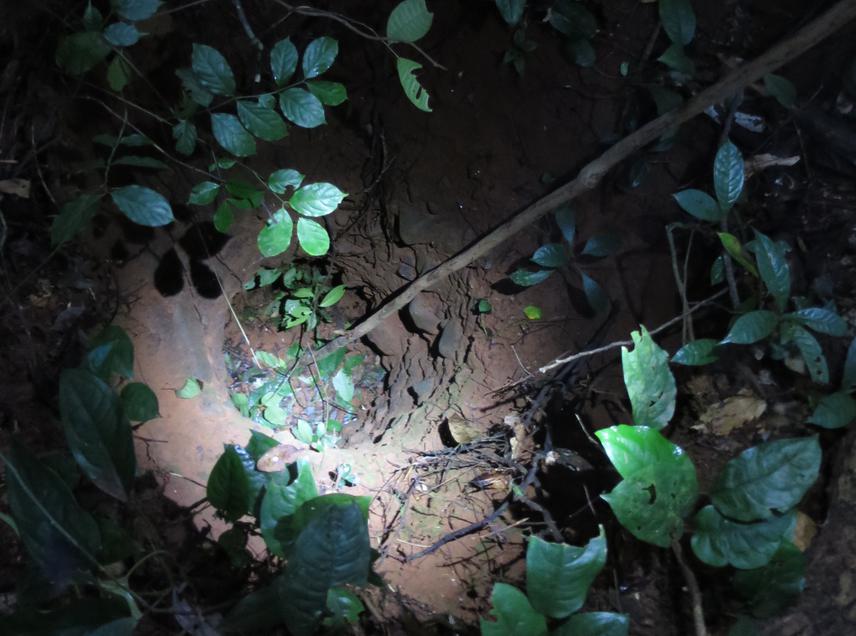Gilbert Baase Adum
Other projects
12 Aug 2010
Conservation of the Ghanaian Endemic Frog Species, Arthroleptis krokosua, Ghana
13 Jun 2013
Habitat Restoration and Recovery for Ghana’s Critically Endangered Giant Squeaker Frog (Arthroleptis krokosua)
18 Apr 2016
Scaling up Activities for the Protection of Ghana’s Iconic Giant Squeaker Frog (Arthroleptis krokosua) and Co-occurring Endangered Species
This project aims at restoring the only habitat of Ghana’s Critically Endangered Giant Squeaker Frog (Arthroleptis krokosua) and sustain campaigns for its protection.

Mine pit at Sui River Forest death trap to endangered frogs.
Ghana’s Critically Endangered Giant Squeaker Frog (Arthroleptis krokosua) is on the brink of extinction. With only 13 individuals known to be surviving, the combination of illegal logging, farming activities and the non-native invasive weed Chromolaena odorata are preventing the species’ recovery from the brink of extinction. We identified these as the major threats on our first RSG project, but also established that the deadly amphibian chytrid fungus is not currently a threat (Penner et al. 2013; PLOS ONE 2013). On our second RSG, we involved local people and removed C. odorata within a 4-ha area and planted 2,000 native tree seedlings. We utilised media including TV, Radio and newspapers; social network, and publications (e.g. Owusu-Gyamfi and Adum 2014; FrogLog 111) to significantly increase awareness about the species’ conservation needs. We also held stakeholder meetings, which formed the premise for objectives of this project.
With the booster grant, together with local people and students we will (1) remove the invasive C. odorata from the species’ remaining degraded habitat; (2) establish community tree nurseries to raise and plant 5,000 native seedlings; (3) field map the spatial distribution of all planted seedlings; and (3) sustain education campaigns for the species’ long-term protection.
Replanting native trees in the remaining degraded areas will increase the Giant Squeaker Frog’s habitat size and establish vegetation corridors within its ranges. The restored areas will improve the species’ habitat conditions and also offer protection for it and other threatened herptofauna and wildlife in the area. In the long-term, while the current level of habitat degradation has significantly exposed the species to the full impacts of the region’s deteriorating climatic changes, the replanted trees will contribute in helping them adapt.
This project is also yet an excellent opportunity to engage our collaborators, both local and international: SAVE THE FROGS! USA (world’s first organisation dedicated exclusively to the protection of amphibians|); Amphibian Survival Alliance (World’s largest amphibian conservation partnership); HERP-Ghana; Forestry Commission; SAVE THE FROGS! Ghana-KNUST Chapter, Giant Squeaker Frog Clubs and local people. With the past involvement of these partners we reached out to more than 30,000 audiences worldwide about the plight of the species. Again, we will use their involvement on this project to our advantage, hoping to reach out to at least 1million audiences. The local awareness creation will especially be useful to generate more avenues for community engagement including instilling in the young generation a conservation spirit.